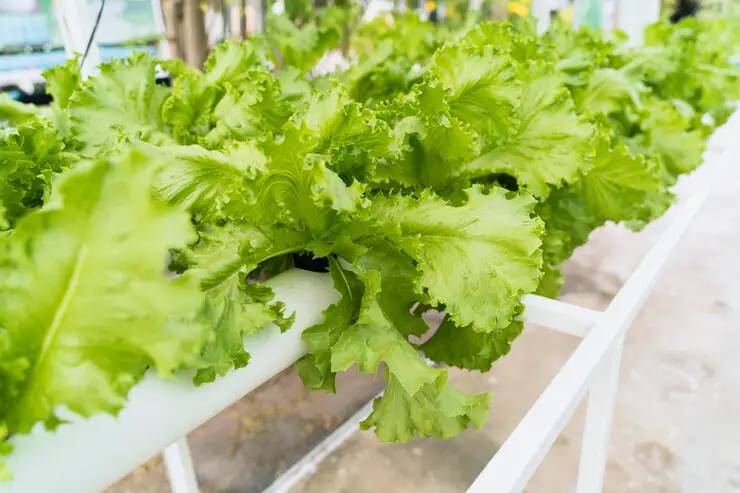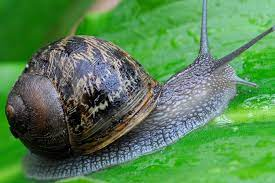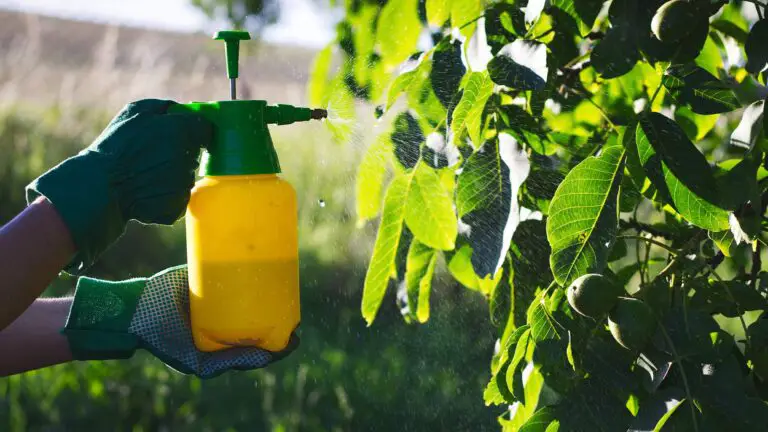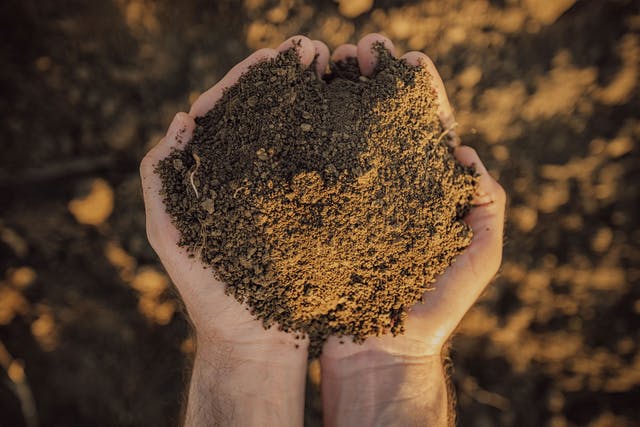Hemp Cultivation Supplies: A Review of the Top Products for Growing and Processing Hemp
Table of Contents
Understanding the Basics of Hemp Cultivation
Hemp cultivation is rapidly gaining popularity among gardening enthusiasts and agricultural professionals alike. This versatile crop not only offers numerous industrial uses, but also provides environmental benefits such as soil remediation and carbon sequestration. However, successful hemp cultivation requires a thorough understanding of its basics.
First and foremost, it is crucial to select the right location for hemp cultivation. This plant thrives in well-drained soil with a pH level between 6 and 7.5. Additionally, hemp requires ample sunlight, ideally six to eight hours per day. Understanding these environmental requirements is essential for providing the optimal growing conditions for your hemp crop.

Once the location is chosen, it is vital to prepare the soil properly. This involves clearing the area of weeds and rocks, followed by tilling the soil to loosen it and improve aeration. Adding organic matter, such as compost or well-aged manure, can enhance the soil’s fertility and structure. Taking these steps to prepare the soil will create a favorable environment for hemp plants to develop healthy root systems and thrive throughout the cultivation process.
Essential Tools for Preparing the Soil for Hemp Cultivation
Preparing the soil for hemp cultivation is a crucial step in ensuring a successful harvest. To achieve optimal soil conditions, there are several essential tools that every hemp cultivator should have in their arsenal. These tools not only help in breaking up the soil but also aid in improving its texture, drainage, and overall fertility.
One of the primary tools needed for soil preparation is a tiller. A gas-powered or electric tiller can efficiently break up compacted soil, allowing for better root penetration and nutrient absorption. It can also help in mixing amendments and organic matter into the soil, promoting a healthy and nutrient-rich environment for the hemp plants.

Another useful tool is a soil pH tester. Hemp plants thrive in a slightly acidic to neutral pH range, ideally between 6 and 7. By regularly monitoring and adjusting the soil pH, cultivators can optimize nutrient availability and uptake, leading to healthier and more productive plants. A pH tester is a simple, handheld device that provides accurate readings of the soil’s acidity or alkalinity.
In addition to these tools, a quality garden fork is handy for breaking up clumps of soil and removing rocks or other debris that may hinder root growth. A rake is also essential for leveling the soil surface, creating a smooth bed for planting the hemp seeds or seedlings.
Investing in these essential tools will not only make the soil preparation process more efficient but also contribute to the overall success of your hemp cultivation endeavors. By ensuring proper soil conditions, you set the foundation for healthy plants and a bountiful harvest.
The Importance of Quality Seeds in Hemp Cultivation
Quality seeds are the foundation of successful hemp cultivation. The importance of selecting high-quality seeds cannot be overstated, as it directly impacts the overall yield, potency, and quality of the plants. When choosing seeds, it is crucial to consider factors such as the cultivar, germination rate, and genetics.
One of the key considerations when selecting hemp seeds is the cultivar or strain. Different cultivars have varying characteristics, including growth habits, flowering times, and cannabinoid profiles. It is essential to choose a cultivar that aligns with your specific goals and requirements for hemp cultivation. Whether you are focused on fiber production, CBD extraction, or other purposes, selecting the right cultivar is vital.
In addition to the cultivar, the germination rate of the seeds is another crucial factor to consider. High-quality seeds have a higher germination rate, which ensures a greater percentage of successful and healthy plants. This is particularly important because hemp cultivation often requires significant investments of time, resources, and effort. By using seeds with a high germination rate, you can maximize your chances of achieving a successful crop.
Furthermore, genetics play a significant role in hemp cultivation. The genetic traits of the seeds determine various characteristics of the plants, such as their resistance to pests and diseases, tolerance to environmental conditions, and overall vigor. Opting for seeds with superior genetics can help mitigate potential risks and challenges associated with hemp cultivation, ensuring a more robust and productive crop.
In conclusion, the importance of quality seeds in hemp cultivation cannot be emphasized enough. By carefully selecting seeds based on factors such as cultivar, germination rate, and genetics, cultivators can lay a strong foundation for a successful hemp crop. Investing in high-quality seeds is a wise decision that can lead to increased yield, potency, and overall quality of the harvested hemp.
Exploring Different Irrigation Systems for Hemp Cultivation
When it comes to hemp cultivation, choosing the right irrigation system is crucial for ensuring optimal growth and yield. The irrigation method you use can significantly impact the overall health and productivity of your hemp plants. There are several irrigation systems available, each with its own advantages and considerations.
One popular irrigation system for hemp cultivation is drip irrigation. This method involves the slow and precise application of water directly to the plant’s root zone through a network of tubes and emitters. Drip irrigation is highly efficient, as it minimizes water loss due to evaporation and runoff. It also allows you to deliver water and nutrients directly to the plants, promoting better absorption and utilization. Additionally, drip irrigation reduces the risk of foliar diseases and weed growth since water is not sprayed onto the foliage. This system works particularly well in hemp cultivation, where precise water distribution is critical for the plant’s optimal development.
Another irrigation system commonly used in hemp cultivation is overhead sprinklers. This method involves the application of water over the plants using sprinkler heads or sprayers that deliver a fine mist or spray. Overhead sprinklers are easy to install and cover a large area, making them suitable for larger hemp fields. However, this system is less water-efficient compared to drip irrigation, as water may be lost through evaporation or wind drift. It is also important to consider the potential for foliar diseases when using overhead sprinklers, as wet foliage can create a favorable environment for pathogens. Nonetheless, overhead sprinklers can be a cost-effective solution for hemp farmers, especially in areas with consistent rainfall or low water availability.
• Drip irrigation is a popular choice for hemp cultivation due to its efficiency and precise water distribution.
• Drip irrigation minimizes water loss through evaporation and runoff, resulting in optimal water utilization.
• This system allows for direct delivery of water and nutrients to the plant’s root zone, promoting better absorption and utilization.
• Drip irrigation reduces the risk of foliar diseases and weed growth since water is not sprayed onto the foliage.
• Overhead sprinklers are commonly used in larger hemp fields due to their ability to cover a large area.
• This system is easy to install and can be a cost-effective solution for hemp farmers.
• However, overhead sprinklers may be less water-efficient compared to drip irrigation as there can be losses through evaporation or wind drift.
• Wet foliage from overhead sprinklers can create a favorable environment for foliar diseases, so it’s important to consider this potential risk.
Overall, choosing the right irrigation system for your hemp cultivation depends on various factors such as field size, availability of water, climate conditions, and desired level of precision. While drip irrigation offers precise watering with minimal wastage, overhead sprinklers may be more suitable for larger fields or areas with consistent rainfall. Whichever system you choose, proper maintenance and monitoring are essential to ensure optimal growth and yield of your hemp plants.
Choosing the Right Fertilizers and Nutrients for Hemp Plants
Choosing the right fertilizers and nutrients is crucial for the successful cultivation of hemp plants. These essential elements play a vital role in the growth, development, and overall health of the plants, ultimately influencing their yield and quality.
When it comes to fertilizers, it is important to select those that are specifically formulated for hemp cultivation. Hemp plants have unique nutritional requirements, and using the wrong fertilizers can result in nutrient imbalances or deficiencies. Look for fertilizers that provide a balanced ratio of nitrogen, phosphorus, and potassium (NPK), as well as other micronutrients like calcium, magnesium, and iron. These nutrients are essential for various physiological processes, including photosynthesis, root development, and flower formation.

In addition to fertilizers, hemp plants can greatly benefit from organic additives such as compost or manure. These organic materials not only contribute to the overall fertility of the soil but also improve its texture and water-holding capacity. Organic additives also promote the growth of beneficial microorganisms in the soil, which aids in nutrient uptake by the plants. It is advisable to conduct a soil test to determine the specific nutrient requirements of your hemp plants, as this will help you select the most appropriate fertilizers and organic additives for your cultivation needs.
Effective Pest and Disease Management Techniques for Hemp Cultivation
Managing pests and diseases is a crucial aspect of maintaining a thriving hemp cultivation operation. As hemp plants are susceptible to a variety of pests and diseases, implementing effective management techniques is essential to ensure the health and productivity of your crop.
One of the first steps in managing pests and diseases is to monitor your plants regularly. Conduct thorough inspections and keep an eye out for any signs of damage or infestation. Early detection can greatly improve your chances of effectively controlling pests and diseases before they can cause significant harm. Additionally, keeping your cultivation area clean and free from debris can help reduce the presence of potential pests and diseases.
When it comes to pest management, there are several techniques that can be employed. Utilizing natural predators, such as ladybugs and nematodes, can help control aphids, mites, and other harmful insects. Introducing beneficial insects to your growing environment can create a natural balance and minimize the need for chemical pesticides. In cases where chemical intervention is necessary, it is crucial to choose products that are specifically formulated for hemp cultivation and follow the instructions carefully to ensure the safety of your crop and the environment.
Disease management is equally important in hemp cultivation. Some common diseases that affect hemp plants include powdery mildew, grey mold, and root rot. To prevent the spread of diseases, it is crucial to practice proper sanitation, including the regular sanitization of tools and equipment. Providing adequate airflow and ventilation can also help reduce the risk of fungal infections. In cases where diseases are detected, prompt action should be taken, such as removing and destroying infected plants to prevent the spread of infection to healthy ones.
Implementing effective pest and disease management techniques is vital to the success of your hemp cultivation endeavor. By monitoring your plants, employing natural predators, and practicing proper sanitation, you can minimize the risk of damage and maximize your crop’s health and productivity.
Essential Equipment for Harvesting and Processing Hemp Plants
Harvesting and processing hemp plants require specific equipment to ensure an efficient and successful operation. The right tools can make a significant difference in the quality and yield of your hemp crop. Let’s now explore some essential equipment that you need for harvesting and processing hemp plants.
1. Harvesting Equipment: When it comes to harvesting hemp plants, timing is crucial. To achieve the optimal CBD content, it is important to harvest the plants at the right stage of maturity. One commonly used equipment for hemp harvesting is a combine harvester or a mechanical stripper. These machines can efficiently cut down the plants, remove the leaves and flowers, and separate the fibers. Another popular tool for small-scale operations is a sickle or a scythe, which provides more control for selective cutting. Additionally, pruning shears or hand trimmers can be useful for delicate trimming of individual plants or specific parts.
2. Drying and Curing Equipment: Properly drying and curing hemp plants is essential to maintain their quality and potency. After harvesting, the plants need to be dried to reduce moisture content, prevent mold growth, and preserve their valuable compounds. Equipment like drying racks, dehumidifiers, and fans can help create an optimal drying environment. Additionally, curing containers, such as jars or bins, are crucial for the post-drying stage. These containers provide a controlled environment for the plants to develop their unique flavors and aromas while maintaining the desired moisture balance.
Remember, investing in high-quality equipment ensures efficient operations and helps maintain the integrity of your hemp crop. By using the right tools for harvesting and processing, you can maximize your yield and produce top-quality hemp products. Stay tuned to learn more about other crucial aspects of successful hemp cultivation and processing.
Maximizing Hemp Yield with Proper Pruning and Training Techniques
Proper pruning and training techniques are essential for maximizing hemp yield. By implementing these strategies, growers can optimize the growth and development of hemp plants, resulting in increased productivity and improved quality of the harvested crop.
When it comes to pruning, the primary goal is to remove any dead or damaged plant material, as well as promote better airflow and light penetration throughout the canopy. This helps to prevent the spread of diseases and pests while also ensuring that every part of the plant receives adequate light and nutrients. Pruning should be done carefully to avoid excessive stress on the plants, and it is advisable to use clean and sharp pruning tools to minimize the risk of transmitting pathogens.
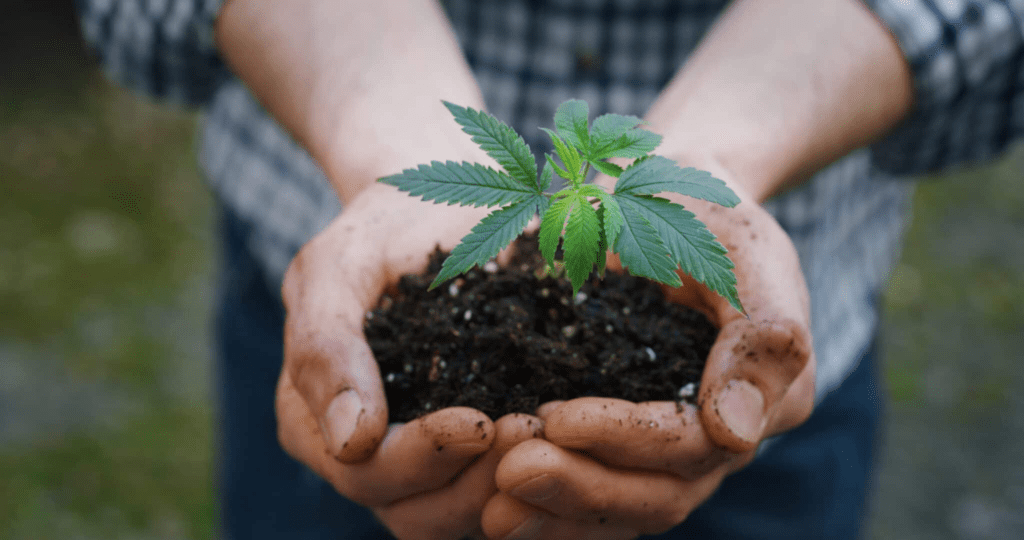
In addition to pruning, training techniques play a crucial role in maximizing hemp yield. Training involves gently manipulating the plant’s growth patterns to enhance its structure and promote optimal bud development. The most common training method for hemp is called low-stress training (LST), which involves bending and securing branches to create a more even and open canopy. This technique helps to improve light penetration, increase the number of flowering sites, and ultimately maximize the yield potential of each plant.
Overall, proper pruning and training techniques are indispensable for hemp growers looking to optimize their yields. By maintaining a healthy and well-structured canopy, growers can ensure that their plants receive the necessary resources for vigorous growth and bountiful harvests. Implementing these techniques requires time and attention, but the rewards in terms of increased yield and improved crop quality are well worth the effort.
Best Practices for Maintaining Optimal Environmental Conditions in Hemp Cultivation
Maintaining optimal environmental conditions is crucial for the successful cultivation of hemp. The right conditions can promote better plant growth, higher yields, and overall plant health. Here are some best practices to consider for maintaining optimal environmental conditions in hemp cultivation:
Firstly, it is essential to ensure that hemp plants receive an adequate amount of sunlight. Hemp is a crop that thrives in full sun, so providing at least 6-8 hours of direct sunlight is crucial. A sunny location with minimal shade will help the plants receive the necessary light energy for photosynthesis and optimal growth.
Secondly, proper ventilation is vital for hemp cultivation. Good airflow helps prevent the buildup of moisture and reduces the risk of diseases such as powdery mildew or mold. Adequate spacing between plants, use of fans, and positioning the crop in an area with natural wind movement can all contribute to maintaining proper ventilation in the hemp field.
Additionally, maintaining the right temperature and humidity levels is crucial for hemp cultivation. Hemp performs best in temperatures between 60-80°F (15-27°C). High temperatures can result in wilting, while cool temperatures can slow down plant growth. Likewise, maintaining the correct humidity levels between 50-60% is essential to prevent moisture-related issues, such as mold or rot.
Lastly, monitoring and managing water usage is crucial for maintaining optimal environmental conditions. Hemp plants require consistent moisture, but overwatering can lead to root rot and other water-related problems. Implementing a proper irrigation system, such as drip irrigation, helps ensure that plants receive adequate water while preventing waterlogging.
By implementing these best practices, hemp cultivators can create an ideal environment for their plants, allowing them to thrive and achieve optimal yields. Remember, maintaining optimal environmental conditions is an ongoing process that requires close monitoring and adjustments as needed throughout the cultivation cycle.
Exploring Different Extraction Methods for Hemp Processing
When it comes to processing hemp, several different extraction methods can be used to extract the beneficial compounds from the plant. Each method has its advantages and disadvantages, and the choice of extraction method will depend on factors such as the desired end product and the scale of production.
One common extraction method is called solvent extraction, which involves using a liquid solvent to dissolve the compounds of interest from the plant material. The solvent is then evaporated, leaving behind a concentrated extract. This method is popular because it can yield a high concentration of cannabinoids and other beneficial compounds. However, it does require the use of potentially hazardous solvents and the process can be time-consuming.
| Extraction Method | Description | Pros | Cons |
|---|---|---|---|
| Solvent Extraction | Uses solvents (e.g., ethanol, butane) to dissolve and extract cannabinoids from hemp. | – Efficient extraction of cannabinoids. – Can isolate specific compounds. | – Requires careful solvent handling. – Residual solvents may be present in the final product. |
| CO2 Extraction | Utilizes carbon dioxide in a supercritical state to extract cannabinoids. | – High selectivity for cannabinoids. – No residual solvents in the final product. | – Equipment cost is relatively high. – Requires expertise in operation. |
Another extraction method that is gaining popularity is supercritical CO2 extraction. This method involves using carbon dioxide at a high pressure and temperature to extract the desired compounds. One of the advantages of this method is that it is considered to be a more environmentally friendly option, as the CO2 used can be recycled. Additionally, this method allows for more precise control over the extraction process, resulting in a higher-quality extract. However, it does require more expensive equipment and expertise to operate.
Essential Safety Gear for Hemp Cultivation and Processing
When it comes to hemp cultivation and processing, ensuring the safety of workers is of paramount importance. The use of appropriate safety gear not only protects individuals from potential hazards but also promotes efficiency and productivity. In this section, we will explore some essential safety gear that should be used in hemp cultivation and processing to mitigate risks and create a safe working environment.
1. Protective Clothing: Farmers and workers involved in hemp cultivation and processing should wear appropriate protective clothing to safeguard themselves from contact with the plant’s fibers, chemicals, and other potential contaminants. This includes wearing gloves, long-sleeved shirts, and pants made from durable and non-absorbent materials.
2. Eye and Face Protection: The eyes and face are particularly vulnerable during the hemp cultivation and processing process. Safety goggles, a face shield, or a combination of both should be worn to shield against potential risks, such as flying debris, chemical splashes, or dust particles.
3. Respiratory Protection: The cultivation and processing of hemp may release airborne particles that can be harmful when inhaled. Hence, the use of appropriate respiratory protective equipment, such as masks or respirators, especially in enclosed or poorly ventilated areas, is essential to prevent respiratory issues and ensure safe breathing.
4. Footwear: Sturdy and slip-resistant boots or shoes should be worn to protect the feet from potential injuries caused by sharp tools, falling objects, hazardous materials, or uneven terrain during hemp cultivation and processing activities.
Remember, prioritizing safety in hemp cultivation and processing not only safeguards the well-being of workers but also contributes to the overall success and sustainability of the operation. By providing and utilizing the recommended safety gear, individuals can work with confidence, knowing that their health and safety are being properly addressed. However, it is important to note that this list is not exhaustive, and it is crucial to assess the specific hazards of each cultivation and processing setup and ensure that the appropriate safety gear is employed accordingly.
Comparing Different Brands and Suppliers of Hemp Cultivation Supplies
When it comes to hemp cultivation, the choice of brands and suppliers for your cultivation supplies can significantly impact the success of your crop. With the growing popularity of hemp cultivation, there has been an increase in the number of brands and suppliers offering a wide range of products. However, not all brands and suppliers are created equal, and it is crucial to compare and evaluate them before making a purchase.
One important factor to consider is the quality of the products offered by different brands and suppliers. High-quality cultivation supplies can contribute to healthier and more robust hemp plants, ultimately leading to higher yields. Look for brands and suppliers that offer products made from durable materials and designed specifically for hemp cultivation. It is also advisable to read customer reviews and testimonials to get a better understanding of the quality and performance of the supplies offered.
Another aspect to compare is the variety of products and equipment available. Different stages of hemp cultivation require different tools and supplies, such as pots, trays, irrigation systems, and pruning tools. Opting for a brand or supplier that offers a wide range of products can save you time and effort in sourcing everything you need from multiple sources. Additionally, consider the availability of specific products that may be essential to your cultivation practices, such as organic fertilizers or specialized extraction equipment.
Lastly, pricing and customer service are vital factors when comparing brands and suppliers. While it may be tempting to choose the cheapest options, it is important to remember that quality should not be compromised. Evaluate the pricing of the products offered and consider the value for money they provide. Additionally, assess the customer service offered by different brands and suppliers, as timely support and assistance can be crucial, particularly in case of any issues or concerns that may arise during the cultivation process.
Comparing different brands and suppliers of hemp cultivation supplies allows you to make an informed decision and choose the best options that align with your cultivation goals. By considering factors such as product quality, variety, pricing, and customer service, you can ensure a successful hemp cultivation journey and maximize the potential of your crop. Remember to thoroughly research each brand and supplier, gather information and feedback, and select the ones that offer both high-quality products and excellent customer support.
Tips for Successful Hemp Cultivation and Processing
Achieving successful hemp cultivation and processing requires careful planning, attention to detail, and a solid understanding of the plant’s unique characteristics. To help you navigate this complex process, here are some essential tips to consider:
1. Start with quality seeds: The foundation of a successful hemp crop begins with using high-quality seeds. Look for reputable seed suppliers that offer certified hemp varieties with proven genetics. Consider factors such as seed viability, germination rates, and disease resistance. Investing in quality seeds will greatly increase the chances of a successful cultivation season.
2. Optimize environmental conditions: Hemp plants thrive in specific environmental conditions. Ensure that your growing area provides ample sunlight, proper airflow, and well-drained soil with adequate nutrients. Monitor and maintain optimal temperature and humidity levels to promote healthy growth. By creating a conducive environment, you can maximize your crop’s potential and minimize the risk of pest and disease issues.
Remember, these are just a few key tips to get you started on your journey to successful hemp cultivation and processing. Stay tuned for more insights and techniques to help you achieve optimal yield and quality in your hemp endeavors.
What is the ideal pH level for hemp cultivation?
The ideal pH level for hemp cultivation ranges between 6 and 7.5.
How often should hemp plants be watered?
Hemp plants require regular watering, especially during the early stages of growth. It is recommended to water them at least once or twice a week, depending on the weather conditions and soil moisture levels.
Can I use organic fertilizers for hemp cultivation?
Yes, organic fertilizers can be used for hemp cultivation. They provide nutrients to the plants while improving soil health and minimizing environmental impact.
How can I prevent pests and diseases in my hemp plants?
Implementing integrated pest management techniques, such as crop rotation, companion planting, and regular scouting for pests and diseases, can help prevent and manage issues in hemp cultivation.
What are the best extraction methods for hemp processing?
Some common extraction methods for hemp processing include CO2 extraction, ethanol extraction, and solventless extraction. Each method has its advantages and disadvantages, so it depends on the desired end product and processing capabilities.
What safety gear is necessary for hemp cultivation and processing?
Essential safety gear for hemp cultivation and processing includes gloves, goggles, respiratory masks, and protective clothing. It is important to prioritize safety to avoid potential hazards and accidents.
How do I choose the right supplier for hemp cultivation supplies?
When choosing a supplier, consider factors such as product quality, reputation, customer reviews, and pricing. It is advisable to research and compare different brands and suppliers to find the most suitable one for your needs.
Are there any legal considerations for hemp cultivation and processing?
Yes, it is important to be aware of the legal regulations and requirements for hemp cultivation and processing in your region. Ensure compliance with licensing, permits, and THC content restrictions, as they vary from country to country and state to state.
Can pruning and training techniques help maximize hemp yield?
Yes, pruning and training techniques such as topping, super cropping, and trellising can help promote better light penetration, airflow, and overall plant development, resulting in increased hemp yield.
What environmental conditions are optimal for hemp cultivation?
Hemp thrives in an environment with temperatures between 60°F and 80°F (15°C to 26°C) and requires adequate sunlight, water, and air circulation. It is important to maintain optimal conditions throughout the growing season.
How long does it take for hemp plants to reach maturity?
Hemp plants typically reach maturity within 70 to 90 days, depending on the variety and environmental conditions. However, the flowering stage may take longer, usually ranging from 8 to 16 weeks.
Can hemp be grown indoors?
Yes, hemp can be grown indoors using artificial lighting and controlled environmental conditions. Indoor cultivation allows for year-round production and enables growers to have more control over factors like temperature, humidity, and lighting.

Pallavi Gupta is a burgeoning writer at SouthElMonteHydroponics, blending her passion for data analysis with a keen interest in biotechnology. Currently pursuing a Bachelor’s in Biotechnology at Amity University, Pallavi delves into the intricacies of life sciences while gaining hands-on experience in the exciting world of data analysis. Her unique background provides a fresh perspective on hydroponic farming, as she explores the intersection of biotechnology and sustainable agriculture. Through her writing, Pallavi aims to bridge the gap between data-driven insights and innovative farming practices, inspiring others to harness technology for a greener future.

